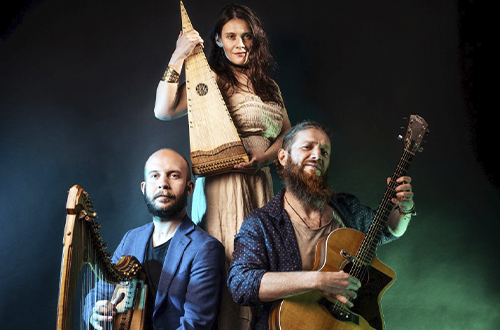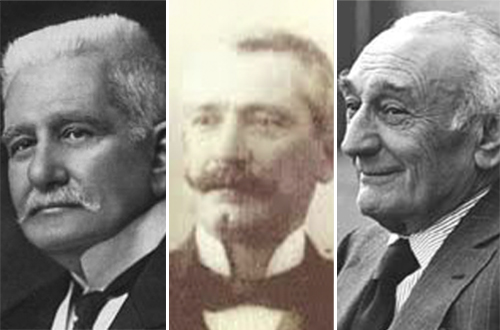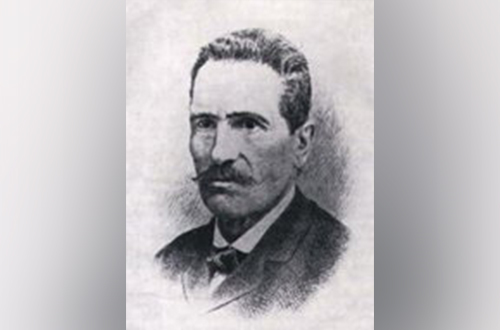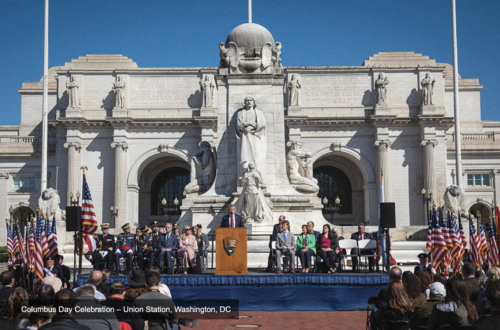-
Scholarship Winners Express Their Gratitude
By Ray LaVerghetta, President and Scholarship Committee Chair
As announced in the previous edition of our Notiziario, we have six scholarship winners for the 2023-2024 academic year: one AMHS scholarship winner, Sofia DeLuca, and five winners of the Angela Lastrico Raish scholarship: Giorgio Consolati, Lauren Barchi, Sonia Fortezza, Amanda Murro, and Javera Chaudhry.
Sofia is a rising senior at George Washington University, where she is majoring in Political Science and minoring in Italian Language and Literature and Peace Studies. She is from New York and her family has roots in Campania and Veneto. Giorgio is a student in the Doctoral Program in Music at The Peabody Institute in Baltimore, where he is majoring in flute. He is a native of Milano and his family has roots in Lombardy and Campania. Lauren is a Doctoral Program of Musical Arts student at Rutgers University, majoring in voice performance. She is from New Jersey and her family has roots in Campania, Basilicata, and Piedmont. Sonia is a Masters student at Montclair State University. She is from New Jersey and her family has its roots in Sicily and Puglia. Amanda is a graduate student at Montclair State University, majoring in music education and saxophone. She is from New York with family roots in Sicily and Campania. Javera is a rising senior at the Mason Gross School of the Arts in Rutgers University, where she majors in music education with a concentration in voice. She is from New Jersey and her family has roots in Tuscany and Sicily.
Below we present the written expressions of gratitude from this year’s winners as well as, for the music scholarship recipients, a link to a performance video.
Sofia DeLuca

To all members of the Abruzzo and Molise Heritage Society:
Wow! My name is Sofia DeLuca, and I am honored to have been selected as a 2023-2024 AMHS scholarship recipient. I want to take this opportunity to thank the members of the Society who made this possible. I am truly grateful for this recognition. As an Italian American, studying Italian at George Washington University has given me the chance to connect with my Italian ancestry like never before. I am incredibly thankful for the opportunity that this scholarship gives me to continue to pursue my passion of studying the Italian language and culture. I am also excited to continue my studies abroad next semester in Florence, Italy, where I will be able to put my language skills to the test and visit my family in Italy. Again, thank you all for making this possible!
Sincerely,
Sofia
Giorgio Consolati

Dear Donors of the Abruzzo Molise Heritage Society:
I am writing to express my sincere gratitude to you for choosing me as a recipient of the 2023 Angela Lastrico Raish Scholarship. It is a great honor to receive your generous grant which will help fund my educational expenses. I am most grateful for your belief and support.
I am currently pursuing a Doctoral Program in Music at the Peabody Institute of the Johns Hopkins University in Baltimore, majoring in flute. I am excited to be part of this institution and to be able to keep pursuing my musical studies while performing. I am also very glad that my Italian heritage allowed me to connect with all of you in the Abruzzo Molise Heritage Society, and I am proud to be representing Italy and its culture at my school, on stage, and beyond.
Thank you again for your very important financial assistance. Receiving this scholarship will allow me to continue chasing my dreams!
Sincerely,
Giorgio Consolati
Sonia Fortezza

Dear Abruzzo and Molise Heritage Society:
I wholeheartedly and graciously accept the Angela Lastrico Raish scholarship for the 2023-2024 academic year. I am honored by the generosity you have shown me and so proud of my Italian heritage.
A career in the arts has always been a passion of mine, but unfortunately it is quite the gamble. This scholarship is a testament to that passion, as well as to my culture and to what makes me unique as a performer. A huge weight has been lifted for the upcoming academic year and I truly could not be more grateful. It is an honor to be recognized for my musical talents, and for that honor to come from fellow Italians is even more special.
My operatic pursuits have always been closely followed by my family. Along with being an only child, I am also an only grandchild on my father’s side. To be able to pursue such a passionate and sentimental art form means everything to my Nonna and Nonno. It is their version of the American dream, so to speak, and it was made possible by their sacrifices and continued support. My Nonno, Vito, often laments that his father, Giovanni Fortezza, passed away from colon cancer the year before I was born. My great grandfather was a huge opera fanatic who never missed a show at the piazza in their hometown, Palo del Colle, in the province of Bari, and my Nonno says how incredibly proud of me his father would have been. To know that his great granddaughter is pursuing her dream of being an accomplished opera singer would have been his greatest pride.
I look forward to a successful career singing the music of some of our greatest ancestors, including Donizetti, Bellini, Verdi, Rossini, and Puccini, to name just a few. I have an amazing support system at home and at school and have been complimented on the Italianate quality of my voice and timbre. My wonderful teacher, Beth Roberts, tells me that is what will set me apart from my competitors. Due to that quality of sound, my voice is best suited to the Bel Canto repertoire, which will allow me to pursue my studies in the Italian language and culture, while fully immersing myself in the world of beautiful, Italian music.
I am excited to announce that, due to the generosity of this scholarship, I will be studying in Toscana this summer with the Lunigiana International Music Festival! I hope that the members of this community will follow my career, and I hope to one day meet all of you and to offer my thanks in person.
Volevo ringraziarvi dal profondo del mio cuore per questa borsa di studio. Grazie per aver reso i miei sogni una realtà. Grazie, grazie, grazie.
Sonia Fortezza
Lauren Barchi

Dear members of the AMHS and the Angela Lastrico Raish team:
I want to express my sincere gratitude for being selected as a recipient of the 2023-2024 Angela Lastrico Raish scholarship. This award will help me continue my doctoral studies at Rutgers University. My Italian heritage comes from both my maternal and paternal sides. My grandmother on my mother’s side immigrated to the United States from Teggiano in the province of Salerno in the Campania region of Italy. My grandfather’s family on my father’s side is from the city of Torino which is the capital city of the Piedmont region. My Italian heritage made me appreciate family traditions. I grew up having antipasto, homemade manicotti, and zeppole at family gatherings. For Christmas Eve, we have the feast of seven fishes, and for Easter, my mother makes pastiera napoletana and pizzagaina.
Music was an important part of my childhood. I was fortunate to start voice lessons when I was around thirteen years old. It was my first real introduction to the Italian language since many of the pieces I learned were Italian. The instant connection I felt to the language and music inspired me to continue my studies in singing and opera. My goal has always been to pursue a career in performance and teaching. I am currently working on my Doctorate of Musical Arts at Rutgers University. While in school, I have performed in two solo recitals, two operas, and was the soprano soloist in Handel’s Messiah. At the beginning of this year, I performed the role of Mimì in La bohème. One of my recitals was music written by women and included four Italian composers: Claudia Sessa, Francesca Caccini, Barbara Strozzi, and Marianne Martinez. Currently, I am an adjunct professor at Long Island University and the music director at the Professional Youth Theatre. I love to share what I have learned from my studies with a new generation of students. After graduating, I want to obtain a tenure track voice professorship and to continue performing.
With the help of the Angela Lastrico Raish scholarship and the support of the Abruzzo and Molise Heritage Society, I will advance in my doctoral studies and be a step closer to achieving my goals. I am proud of my Italian heritage and honored to be recognized as an Italian-American opera singer.
Grazie di cuore,
Lauren Barchi
Javera Chaudhry

Dear Abruzzo and Molise Heritage Society and the Angela Lastrico Raish team:
I want to say “thank you” for awarding me the Angela Lastrico Raish Scholarship for the 2023-2024 school year. I am very grateful to receive this award because I feel that, with being stuck at home my freshman year of college due to Covid-19, all my hard work during this time has paid off. As a Music Education major with a vocal concentration, I had to take Diction for Singers, Music History, and I even took the elective, Italian for Music, when I was at home. My ethnicity is Pakistani, Polish, and Italian. With my Italian heritage, I feel that, with all the Italian songs I am singing in my voice lessons, I am learning more about this part of my heritage. I am always trying to improve on areas that I struggle with in my major, and I feel that, with this scholarship, I can continue to absorb more knowledge in Diction, Music History, Vocal Pedagogy, and Performance. For my career, I want to be able to use this knowledge when I am directing a choir because I believe that the students should learn about what they are singing, instead of just learning the music alone. Thank you all very much for granting me this award.
Sincerely,
Javera Chaudhry
Amanda Murro

Dear Members of the Abruzzo and Molise Heritage Society:
I am extremely honored to be chosen for the 2023-2024 Angela Lastrico Raish Scholarship Award. I want to express my gratitude for this contribution that will be aiding me to continue my education at Montclair State University. This scholarship represents how my Italian heritage has had a direct impact on my love and passion for music and education. My love and passion for music was sparked by my Nonno Salvatore who immigrated to the United States in 1967 from Sicily, Italy. My Nonno was a tailor and moved here for a better life for my mom and his family. In Sicily, my Nonno Salvatore played the tenor saxophone in the Italian Army band. When he moved here, he played in wedding bands every weekend to help support his family and to pay the bills. My Nonno always played his saxophone when my family was together and he is the reason that I chose to play the alto saxophone in the 4th grade. This connection with him has brought me a great sense of pride in the Italian language, culture, and music. I was accustomed at a young age to hear and see how music brought our entire family together through high and low moments. In 2012, my Nonna Emanuela was diagnosed with dementia and she began to lose her memory rapidly. My Nonna would forget who I was, forget my name, forget where she was living, and what she did that morning. Despite these lapses, my Nonna never forgot the music which she grew up listening to. Her sense of joy that was brought about when my Nonno and I played our saxophones was indescribable. Although my Nonna’s memory was deteriorating, the music she listened to was always alive inside her. It was evident that listening to music which she enjoyed throughout her life had sparked her memory and in those moments it did not seem as if she was suffering from dementia. These moments were pivotal in understanding the importance of music in my life and sharing it with those around me. After experiencing these moments with my Nonna and her progressing dementia, I knew that I wanted to create, teach, and share music for the rest of my life. I currently teach music and band to grades K-8 in New Jersey. As a music educator, it is vital for me and for my students to continue always learning and growing. Through the Angela Lastrico Raish Scholarship, I am being supported in furthering my education and I am extremely thankful to the Abruzzo Molise Heritage Society for choosing me for this award!
Best Regards,
Amanda Murro
September/October 2023
-
Popular Italian Folk Group to Perform on October 29, 2023
By Nancy DeSanti, 1st Vice President-Programs
The popular Italian folk music group, Ensemble Sangineto, is coming to Casa Italiana on October 29, 2023, at 1:30 p.m., to perform some of their unique traditional songs of the 20 regions of Italy.
This trio from northern Italy blends Italian folk influences and others from throughout Europe — including Irish, Breton, and French traditions — with classical music, early music, Celtic music, Gregorian chants, musical theater, modern pop, and jazz influences.

Ensemble Sangineto
Credit: Alessandro ErbettaEnsemble Sangineto was co-founded by Adriano and Caterina Sangineto, who are twins. The group consists of Adriano on Celtic harp, stomp box and vocals; Caterina on bowed psaltery, flute, percussion, and vocals; and Jacopo Ventura on acoustic guitar, bouzouki, and vocals.
The twins’ father, Michele, was a noted instrument maker in Monza, a city just north of Milano. Growing up, Adriano and Caterina had the opportunity to play instruments built by their father as well as other instruments that he had either collected or bought elsewhere. They attended music academies in Monza and neighboring Villasanta, then went to the Conservatorio di Milano where Adriano learned clarinet and Caterina learned flute. Both also play the harp and a bowed psaltery which is a harp-like instrument that probably originated in the Middle East.
Last year, the group began “Grand Tour Vol. 1,” marking the first installment of a two-part project paying tribute to traditional Italian music with fresh renditions of folk songs from each of the 20 regions of Italy. This project gave rise to the concert “Le Grand Tour — Songs and Enchantments from the Alps to the Mediterranean Sea.”
Adriano recently told an interviewer: “When you create a tune or a song, you prepare yourself to be the center of a universe full of feelings, words, and beauty. That magic force will be shared by the listeners and by any other person who wants to live and discover your soul. That is pure magic, isn’t it?”
September/October 2023
-
Three Entrepreneurs from Abruzzo
By Joseph “Sonny” Scafetta, Jr.
The Notiziario has in recent years presented profiles of individuals from Abruzzo or with roots in the province who have made their marks in the world of the arts. Abruzzo has also produced some talented and successful businessmen. Here is a look at three of them.
Raffaele Cappelli (1848-1921)
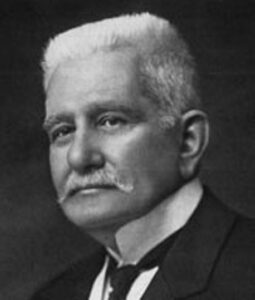
Raffaele Cappelli
Credit: WikipediaRaffaele Cappelli was born in the community of San Demetrio ne’ Vestini (population 2,913 in the first Italian Census of 1861), in the province of L’Aquila in the region of Abruzzo, on March 23, 1848. His father was Salvatore Cappelli and his mother was Maria Maddalena Borgia. He had two siblings.
After he earned a degree in jurisprudence from the University of Naples in 1870, he commenced a diplomatic career for the Kingdom of Italy. He was first attached to the embassy in London. He returned to Naples in 1874 to marry his university sweetheart, Maria Pasqua. They had one son whom Raffaele named after himself. His next assignment was to the embassy in Vienna. He was next transferred by the kingdom to Berlin.
Realizing a lack of advancement in the diplomatic service, he resigned to return to his home province and run for the position of deputy in the lower house of the Italian Parliament as a member of the Historic Right Party. He was elected to the Chamber of Deputies on his first try in 1878. In 1885, he was chosen by the prime minister to be the general secretary of the Ministry of Foreign Affairs because of his prior diplomatic service. He served two years in this position.
Returning to the Chamber of Deputies, he developed a particular interest in agrarian reform because starvation was still a problem in different parts of Italy at that time. As a result, he was elected president of the Society of Italian Agriculturists in 1896. On April 6, 1897, he was elected vice president of the Chamber of Deputies.
In 1906, he decided to use one of his small farms as an experimental station. He hired Nazareno Strampelli, a competent agronomist and geneticist, to cross breed different wheat species to create a type that would be drought resistant. Eventually, his wheat experiments, conducted with Strampelli, resulted in the creation of a new drought-resistant wheat strain which was called Cappelli. Prior to its development, Italy was a net importer of wheat from Russia and the United States. After the seeds of the new strain were distributed nationwide, Italy became self-sufficient and no longer imported wheat from other countries. For his work, King Victor Emmanuel III made Cappelli a Marchese and a Cavaliere of the Grand Cross in the Order of the Saints Maurizio and Lazzaro on March 23, 1911, his 63rd birthday.
Back in the Chamber of Deputies, when the prime minister asked for a declaration of war against the Central Powers in May, 1915, Cappelli campaigned against the declaration, but it passed over his objections and Italy entered World War I on the side of the Allies. Nevertheless, Cappelli continued as vice president. After the war was over, he was elected Senator for Life on October 6, 1919. He served in the Senate, which is the upper house of the Italian Parliament, until his sudden death from a heart attack in Rome on June 1, 1921. He was 73 years old.
Sources (all accessed February 28, 2021):
- https://it.wikipedia.org/wiki/Raffaele_Cappelli
- https://www.myheritage.com/names/raffaele_cappelli
- https://it.wikipedia.org/wiki/San_Demetrio_ne’_Vestini
- https://www.lamiola.com/wheat-senatore-capelli–history-important-grain
Beniamino Laccetti
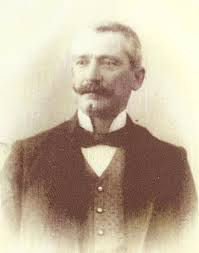
Beniamino Laccetti
Credit: Vastesi in the WorldBeniamino Laccetti was born on January 25, 1855, in the city of Vasto in the province of Chieti in the region of Abruzzo. Although he was a good student in school, his father took him out when Ben reached 14 and put the teen to work in the family’s mercantile trading business. Nevertheless, during his free time in the evenings, Ben taught himself by reading library books, particularly on geography and agriculture.
When he turned 21, Ben was sent by his father to Naples because it had a large harbor from which the family could continue to carry out its commercial activities. From the port of Naples, Ben opened trade with eastern European countries, particularly Romania, and then Africa. As a result, in 1898, he became a member of the African Society which supported the colonial activities of the Royal Italian Government in northern and eastern Africa.
However, the dream that absorbed Ben all his life was the building of a port at Punta Penna (Feather Point) which had a deep harbor located at the northern end of Vasto along the Adriatic seacoast. Ben imagined that Vasto could then take part in direct international trade. After much lobbying in Rome by Vastesi businessmen, King Victor Emmanuel III issued a royal decree in 1907 declaring Punta Penna to be the future site of a harbor with dual functions as a military and commercial port. After the Vasto City Council approved engineering plans for building the port, Ben went to Rome and presented the Italian Government with a plan. He proposed to bear the entire cost of the construction of the port if he would be granted a 30-year concession as a free trader so that he could recover his building costs by not paying any export and import duties. The Italian Government turned down his proposed private-public plan.
Dejected, Ben returned in 1920 to Naples where he became a member of the governing council of the African Society. He also became the General Secretary of the Circolo del Commercio (Circle of Commerce) in Naples. He then began publishing various studies and proposals, reported in over 20 publications, all international in character, for improving trade for Italy. In 1936 at the age of 81, Ben printed his last work: “Le Nostre Colonie: Cenni Geografici Generali” (Our Colonies: General Geographical Signs) with the explanatory subtitle “Studio Pratico per I Lavoratori” (Practical Study for the Workers). This guide summarized all his experience and knowledge gleaned from years of trading in various geographical areas. It was intended to pass advice on to young workers who were just beginning their colonial businesses.
Taking his own advice, Ben decided in 1939 to extend his business to Eritrea, which at that time was a province in northern Ethiopia, in eastern Africa. After the British Army drove the Italian Army out of Ethiopia, he relocated to the city of Tripolitania (now Tripoli) in Libya. When the American and British Armies drove the German and Italian Armies out of Libya, Ben returned to Naples. In 1946, the new Italian Republic adopted a plan to build a port at the naturally deep harbor of Punta Penna. In May 1948, Ben returned to his hometown of Vasto to witness the laying of the first stone of the port at Punta Penna. Finally, as a happy man, he returned to Naples where the life-long bachelor died after a year on May 16, 1949, at the age of 94.
Source accessed September 25, 2020:
Henry Salvatori

Henry Salvatori
Credit: USC NewsErcole Salvatori was born in the community of Tocco da Casauria (population 2,662 in the 2017 Census) in the province of Pescara in the region of Abruzzo, on March 28, 1901. On April 17, 1908, the seven-year-old Ercole arrived at Ellis Island with his mother, Francesca di Giulio, and his two sisters. They soon joined Ercole’s father who had already settled on a farm in southern New Jersey. When the family members became U.S. citizens, Ercole changed his name to Henry.
Afterwards, the family moved to the Little Italy section of south Philadelphia where his father started a successful wholesale grocery business. Henry graduated from the local public high school in 1919. He earned a Bachelor of Science degree in electrical engineering from the University of Pennsylvania in Philadelphia in 1923 and a Master of Science degree in physics from Columbia University in New York City in 1926.
He then went to work as a geophysicist for Geophysical Service, Inc. In 1933 during the depth of the Great Depression, he left to establish the Western Geophysical Company of America in California. The company used reflection seismology to explore for oil and prospered. In 1938 at the age of 37, Henry married a 25-year-old actress named Grace Ford. They had a son, Henry Ford Salvatori (June 29, 1940 – July 23, 2016), and a daughter, Laurie Salvatori Champion, who was born on May 4, 1948. In 1961, the 60-year-old Salvatori merged Western Geophysical into Litton Industries and became chairman and chief executive officer of the joint company.
He then began a second career as a political activist. He started in 1962 by working in Richard Nixon’s unsuccessful campaign for governor of California. Next, in 1964, he chaired Barry Goldwater’s unsuccessful presidential campaign in California. In 1966, Salvatori served as state finance chairman for Ronald Reagan’s successful campaign for governor.
After retiring from Litton and tiring of state politics in 1969, Salvatori turned his attention to a third career as a philanthropist. That year he founded the Henry Salvatori Center for the Study of Individual Freedom in the Modern World at Claremont McKenna College, a private liberal arts school in Claremont, California. Over the course of the next two decades, he made large donations to the following: the Dorothy Chandler Pavilion which is an opera house in Los Angeles; the University of Southern California where he served as a life trustee; the University of Pennsylvania; Columbia University; Stanford University; Pepperdine University; Boston University; Saint Thomas Aquinas College in Sparkill, New York; and Hillsdale College in Hillsdale, Michigan.
After his wife died on May 5, 1990, he established the Henry Salvatori Foundation which endowed the Henry Salvatori Professorship in American Values & Traditions at Chapman University and the Henry Salvatori Professorship in Law & Community Service at the Chapman University School of Law in Orange, California. In 1991, he was honored by the Young America’s Foundation which created the annual Henry Salvatori Lecture Series. As a long-time member of the Order of the Sons (now & Daughters) of Italy in America, he donated in 1995 a corpus large enough to earn at least $5,000 in interest to fund the Henry Salvatori Scholarship which is given yearly to a worthy Italian-American student. The prize is now given in the name of his late son, Henry F. In 1996, the Heritage Foundation established the Salvatori Prize for American Citizenship which is awarded annually. He died in the Saint John’s Medical Center in Santa Monica, California, on July 6, 1997, at the age of 96.
Sources, all accessed June 22, 2021:
- https://en.wikipedia.org/wiki/Henry_Salvatori
- https://news.usc.edu/11494/Trustee-Henry-Salvatori-Dies-at-96/
- https://en.wikipedia.org/wiki/Tocco_da_Casauria
- https://en.wikipedia.org/wiki/Wesrern_Geophysical
- https://www.imdb.com/name/nm0285663/
- https://www.legacy.com/obituaries/latimes/obituary.aspx?pid=180
- https://www.mylife.com/laurie-champion
- https://en.wikipedia.org/wiki/Claremont_McKenna_College
- https://en.wikipedia.org/wiki/Dorothy_Chandler_Pavilion
- https://en.wikipedia.org/wiki/St._Thomas_Aquinas_College
- https://en.wikipedia.org/wiki/Hillsdale_College
- https://en.wikipedia.org/wiki/Chapman_University
September/October 2023
-
Expert Details Roman Coin Transition from Metal Lumps to Imperial Gold Coins
Topic of Virtual Talk
By Nancy DeSanti, 1st Vice President-Programs

Michael Markowitz AMHS members were treated to a very informative and entertaining virtual talk, “Show Me the Money!” on July 30, 2023, by Michael Markowitz, an expert on Roman coinage. who told us about its evolution from lumps of metal in 300 B.C. to imperial gold coins in 476 A.D.
Mike was born in New York City. His mother’s side of the family is Italian, while his father’s ancestors emigrated from Romania. Mike attended the University of Rochester, then the University of California, Irvine. He worked for many years in the aerospace industry in southern California before moving in 1991 to northern Virginia where he is a senior research specialist for the Center for Naval Analyses.
He is a contributing writer on ancient and medieval coins for CoinWeek.com. He is a member of the American Numismatic Society and the Ancient Numismatic Society of Washington, D.C. He also serves on the board of directors of the Fairfax Coin Club. Mike said that one of his most memorable experiences was spending an afternoon inside the coin vault of the archaeological museum in Siracusa, Sicily.
As Mike told the audience, we collect coins to hold history in our hands. He explained that coins showed symbols the government wanted to communicate to people who were largely illiterate. He noted that Petrarch was one of the first Roman coin collectors. Amazingly, he said there are at least 21,669 different types of Roman coins, according to one authoritative source. As many as 40,000 coins have been found buried in clay pots in fields in rural areas — not surprising since there were no banks then.
He said that for less than $25, you can buy a Roman coin of Constantine the Great with a woman in a winged helmet, and he added that there were many images of women as the personification of virtue. Zenobia, Queen of Palmyra, was one of the women who had a coin made in her image. He noted that the Constantine the Great coin showed a watchtower on the reverse side because, due to the barbarian invasions, there was a need for watchtowers.
A fantastically detailed coin of the Colosseum is one of the rarest coins, he said, and one of them sold in 2011 for over $400,000.
The coin that got Caesar killed, he told us, came about when Julius Caesar put his portrait on a coin as “dictator in perpetuity” which rubbed some senators the wrong way and led to the conspiracy that resulted in his assassination. Interestingly, he said that the word “Caesar” gave rise to the words, “tsar” and “kaiser.”
He noted that the penalties for counterfeiting were barbaric — hands and heads were chopped off — since that was considered an offense against the emperor. But he joked that counterfeiting was invented about a week after coins were invented, and surprisingly, these counterfeits are still collectibles. He warned that a high percentage of Roman coins on eBay are fakes coming from Eastern Europe and China.
There are billions of coins still in the ground in the territories of the former Roman Empire, he said. He added that laws vary as to who gets ownership, but in many countries metal detectors are illegal, so in some countries it is a shady “underground” business.
Mike said the most beautiful coins of the ancient world were from the 4th and 5th centuries B.C., made by talented Greek engravers and found in Siracusa, Sicily.
He pointed out that Olympic medals represent the materials that coins were made of gold, silver, and bronze which was the most plentiful of the three, also used for making armor and weapons. He said coin making was a tough job, and coin makers working in the mint wore black hats so their hair would not catch on fire from the flying sparks.
Mike said one of the best places to see Roman coins is the Museo Nazionale Romano near the Termini train station in Rome. King Vittorio Emanuele III was an expert in Roman coins, and he left his collection to this museum. Mike said he recently checked the website of the Museo Nazionale, and it is unfortunately closed until further notice.
Other important collections of Roman coins are found in the Hermitage in St. Petersburg, Russia, and in London, Paris, and Berlin. He said that the Smithsonian Institution does not exhibit Roman coins due to the difficulty in curating them and because of the security risks.
September/October 2023
-
Digging in the Dirt in Abruzzo and Molise: Noted Archeologist Antonio De Nino
By Joseph “Sonny” Scafetta, Jr.
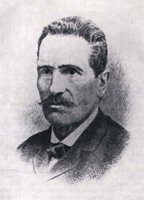
Antonio De Nino
Credit: WikipediaAntonio De Nino was born in the community of Pratola Peligna (population 7,249 in the 2020 Census) in the province of L’Aquila in the region Abruzzo on June 15, 1833. Nothing has been published about his parents, his education, and his immediate family, if any. There was nothing in his background to suggest that he would one day return to his home region as a successful archaeologist.
He first appeared in public records in 1861 when, at the age of 28, he became an elementary school teacher in San Demetrio ne’ Vestini in the province of L’Aquila. After a year, he transferred to teach high school in the town of Leonessa in the province of Rieti in the region of Lazio. In 1872, he was appointed a professor at the “Publio Ovidio Nasone” Technical School, a classics-based secondary school in the city of Sulmona in the province of L’Aquila.
While living in Sulmona, he became interested in archeology and began to study popular local traditions. His first publication Armi Preistoriche (Prehistoric Weapons) appeared in the Gazette of Sulmona in 1874. The Ministry of Public Instruction in Rome appointed him Inspector of Monuments in 1877 and directed him to make excavations systematically in Abruzzo. During that same year, the Lincei Academy began to publish his annual Notizie Degli Scavi (News About Excavations). Later, his reports were printed in the Bulletin of the Institute of Archeology of Italy.
His first major excavation was in the plain of Pentima where the city of Corfinio was built over the ancient town of Corfinium that had been proclaimed the rebel capital of Italy by the Paeligni, an Italic tribe, in 89 B.C. While working there, he discovered the inscription of Herentas, the most important epigraphic text in the language of the Paeligni. He later opened another important excavation campaign at Campo Consolino near the town of Alfedena. The site was a fortified citadel with a cemetery for a city of the Pentri, one of the chief Samnite tribes which disappeared from the historic record after 216 B.C. In the cemetery, De Nino’s team opened 42 tombs which contained the remains of individuals dressed in tribal wardrobes. Over the course of 30 years, he opened 107 excavation campaigns throughout Abruzzo, Molise and Lazio.
Meanwhile, De Nino wrote five tomes entitled Usi e Costumi Abruzzesi (Abruzzesi Usages and Costumes) which appeared in 1879, 1881, 1883, 1887 and 1891. They are all collections of descriptions of local customs and dresses in different parts of Abruzzo. The books are still of fundamental importance for understanding the origins of most popular practices today.
De Nino died in Sulmona on March 1, 1907, at the age of 73. After his death, Sulmona dedicated a street in its historic center in his honor. Also, four archeological museums in Abruzzo are named for him. They are located in his birthplace of Pratola Peligna, in the town of Alfedena, in the city of Corfinio, and in the Convent of the Maddalena at Castel di Sangro.
Sources:
September/October 2023


